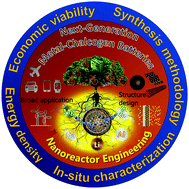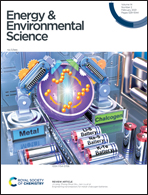Engineering nanoreactors for metal–chalcogen batteries
Abstract
Metal–chalcogen batteries (MCBs) are promising alternatives to the commonly used lithium-ion batteries, because they can provide remarkable capacities while using cheaper and more versatile electrodes. Nevertheless, the rational design and controllable synthesis of electrode materials is still a great challenge. The essential functions of MCB electrodes include: (1) electrical conduction, (2) cathode species encapsulation, (3) intermediate species immobilization, (4) cathode redox reaction acceleration and (5) anode species stabilization. Design of nanoreactors for MCBs has been proven as a highly feasible strategy for integrating some or all of these features into an individual electrode material, to be used in these batteries. In this review, the concept and features of nanoreactors are firstly introduced. Afterwards, we present the major synthetic strategies for constructing nanoreactors with different morphologies and dimensions. Next, we present the main functions of MCBs and how they can be imparted upon the electrode nanostructures via nanoreactor design and engineering. The follow-up section reviews examples of typical nanoreactors for applications in MCBs. Finally, the perspectives and future directions are discussed in this exciting field of research.



 Please wait while we load your content...
Please wait while we load your content...